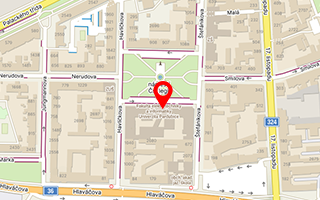Publikace detail
Hibernation temperature-dependent Pseudogymnoascus destructans infection intensity in Palearctic bats
Autoři:
Martinkova Natalia | Pikula Jiri | Zukal Jan | Kovacova Veronika | Bandouchova Hana | Bartonicka Tomas | Botvinkin Alexander D. | Brichta Jiri | Dundarova Heliana | Kokurewicz Tomasz | Irwin Nancy R. | Linhart Petr | Orlov Oleg L. i | Piacek Vladimir | Škrabánek Pavel | Tiunov Mikhail P. | Zahradnikova Alexandra, Jr.
Rok: 2018
Druh publikace: článek v odborném periodiku
Název zdroje: Virulence
Název nakladatele: Taylor & Francis Ltd.
Místo vydání: Abingdon
Strana od-do: 1734-1750
